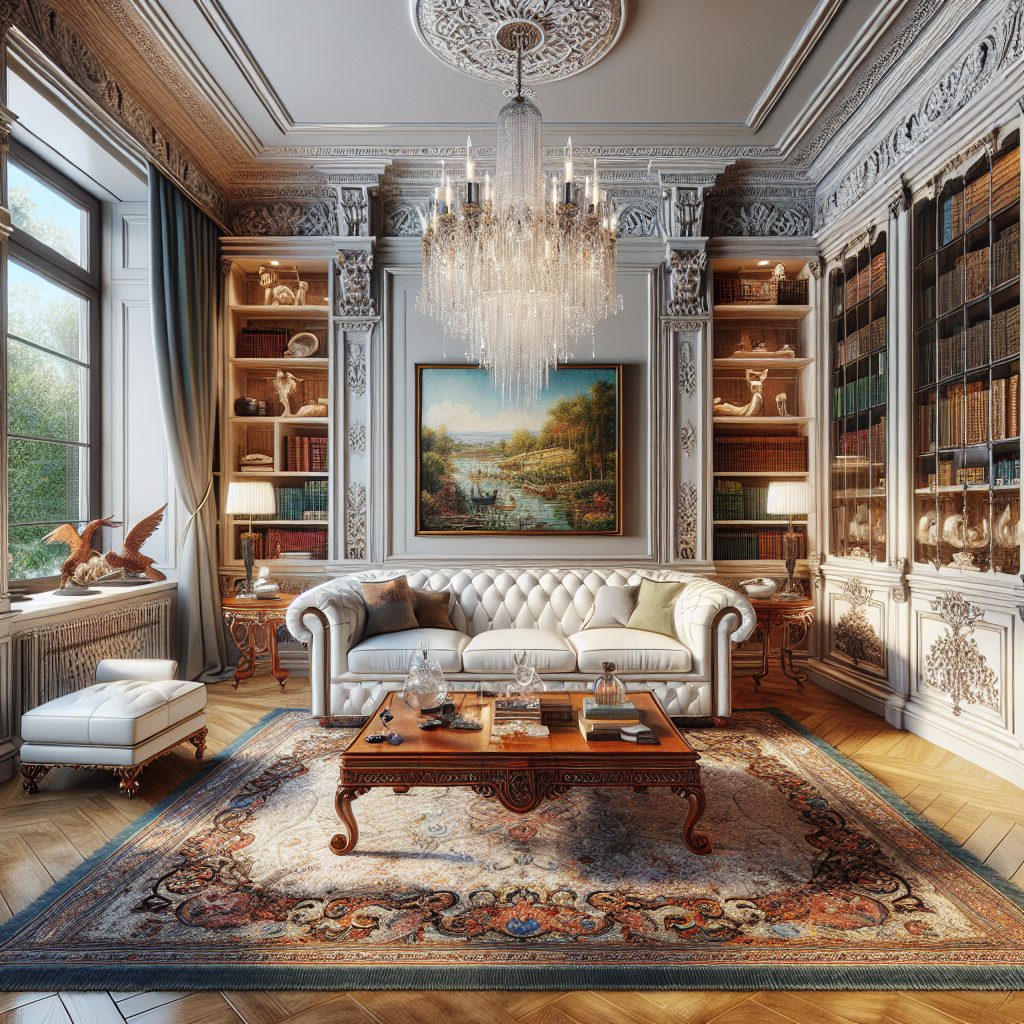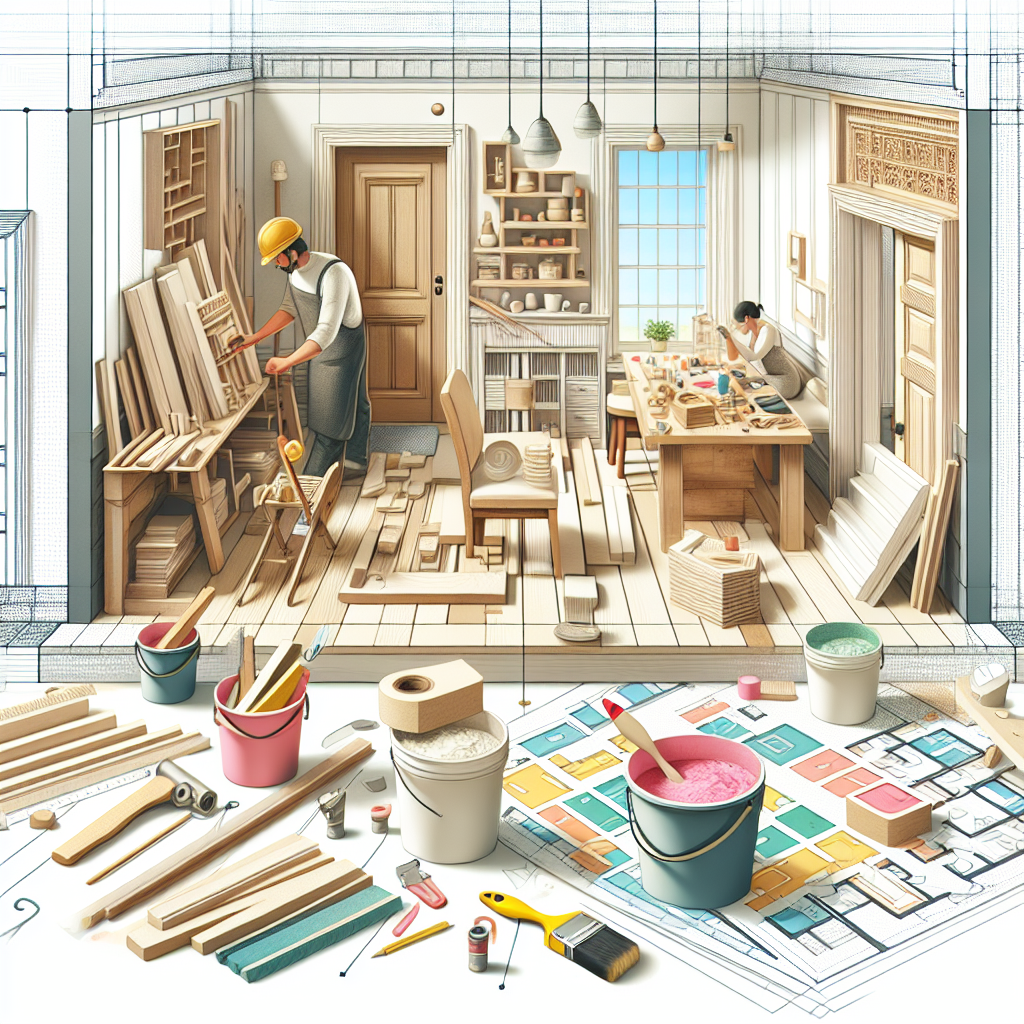Trim is more than just a finishing touch; it’s a defining feature that can elevate the aesthetic of any room. From baseboards to crown molding, trim adds character, depth, and value to your home. It can highlight architectural details, frame your space, and even make ceilings appear taller. The intricate designs and styles available allow homeowners to personalize their spaces uniquely, enhancing the existing architecture.
Moreover, trim can serve functional purposes, such as protecting walls or hiding imperfections. It acts as a bridge between different elements of a room, offering a cohesive look that feels intentional and thoughtful. When chosen carefully, trim can enhance the flow of a space, guiding the eye and creating harmony between different design elements.
Types of Trim
- Baseboards: These protect walls from kicks, furniture, and vacuum cleaner bumps. They also provide a visual transition between the walls and floor. Baseboards come in various styles and heights, allowing you to choose a look that complements your overall design scheme.
- Crown Molding: Installed where walls meet the ceiling, crown molding adds elegance and can make a room feel complete. The variety of profiles available can suit both traditional and modern aesthetics, offering a refined touch to any space.
- Wainscoting: This is paneling on the lower part of the walls that can add texture and interest. Wainscoting can be used creatively to add dimension and break up large wall spaces, making rooms feel more intimate and curated.
- Chair Rails: These horizontal moldings can protect walls from damage and also add a decorative element. Beyond protection, chair rails can visually divide walls, allowing for creative use of color or pattern above and below the rail.
Planning Your Home Makeover
Before diving into your trim project, it’s crucial to plan carefully. Proper planning ensures that your home makeover is both efficient and effective, minimizing disruptions and maximizing results. Consider the following steps to ensure a seamless process:
Assess Your Space
Take a good look at your home. Identify the areas that would benefit most from new trim. Consider how the trim will interact with existing architectural features and furnishings. Understanding the layout and flow of your space will help you make informed decisions about where and how to implement trim.
Look for opportunities where trim can enhance natural light, draw attention to focal points, or create visual balance. This assessment phase is crucial for identifying potential challenges and opportunities, ensuring that the final result feels cohesive and intentional.
Set a Budget
Determine how much you’re willing to spend on your home makeover. Custom trim can be a cost-effective way to enhance your home, but costs can add up depending on the materials and design complexity. A clear budget helps prioritize areas that need attention and ensures that you get the most value for your investment.
Consider unexpected expenses and set aside a contingency fund for any surprises. Research different materials and installation methods to understand where you might save money without compromising on quality.
Choose Your Style
Select a style that complements your home’s architecture and your personal taste. Whether it’s classic, modern, or rustic, the trim should enhance the overall aesthetic of your space. Your choice of trim style should reflect your personal style and the character of your home, creating a harmonious blend that feels both natural and intentional.
Explore different design inspirations and consider how each style might influence the mood and function of your space. A well-chosen trim style can bring your entire home design together, creating a unified look that feels both fresh and timeless.
DIY Home Projects with Custom Trim
Custom trim projects can be a rewarding DIY endeavor. With the right tools and a bit of patience, you can transform your home with your own hands. The sense of accomplishment from completing a trim project yourself adds a personal touch to your home, making it truly your own.
Engaging in DIY projects also offers a unique opportunity to learn new skills and techniques. As you work through the process, you’ll gain a deeper appreciation for the craftsmanship involved and the impact of thoughtful design on your living space.
Tools You’ll Need
- Mitre saw or mitre box: Essential for cutting trim at precise angles to ensure clean joints.
- Hammer or nail gun: For securing trim pieces in place with efficiency and precision.
- Measuring tape: Accurate measurements are crucial for a professional finish.
- Level: Ensures that your trim is installed straight and even.
- Paint or stain: Adds the finishing touch, enhancing the trim’s appearance and protecting the material.
Having the right tools on hand is key to a successful DIY project. Investing in quality tools can make the process smoother and more enjoyable, leading to better results.
Step-by-Step Guide
- Measure and Plan: Measure your walls and calculate the amount of trim needed. Plan the layout, considering the placement of doors, windows, and electrical outlets. A detailed plan helps avoid mistakes and ensures a seamless installation process.
- Cut the Trim: Use a mitre saw to cut the trim pieces at the correct angles. This is crucial for achieving clean, seamless joints. Precision in cutting is vital to achieving a polished look, so take your time with this step.
- Install the Trim: Start with the baseboards and move up to crown molding. Use a level to ensure accuracy and a nail gun for secure installation. Installing trim requires patience and attention to detail, but the effort pays off with a professional-looking finish.
- Finish: Fill any gaps or nail holes with wood filler. Sand and paint or stain the trim to match your desired finish. Finishing the trim enhances its appearance and ensures longevity, adding the final touch to your project.
Home Renovation Tips for Custom Trim Installation
Even with DIY projects, some pro tips can help ensure your custom trim looks professional and lasts for years. Incorporating expert advice can elevate your project, making it look professionally done even if it’s your first time.
Precision is Key
Always measure twice and cut once. Precise cuts are essential for seamless joints and a polished look. Taking the time to double-check measurements can prevent costly mistakes and ensure a perfect fit for each piece of trim.
Careful planning and execution can make the difference between a project that looks amateur and one that appears professionally installed. Attention to detail at every stage of the process is crucial for achieving the best results.
Use Quality Materials
Invest in high-quality materials for durability and a superior finish. MDF is a budget-friendly option, while hardwood offers a premium look. Choosing the right material is essential for ensuring that your trim withstands the test of time and maintains its aesthetic appeal.
High-quality materials not only enhance the appearance of your trim but also improve its functionality. Durable materials resist wear and tear, ensuring that your investment pays off in the long run.
Safety First
Wear protective eyewear and follow safety precautions when using power tools. Ensure proper ventilation when painting or staining. Safety should be a top priority in any DIY project to prevent accidents and injuries.
Being mindful of safety not only protects you but also ensures that your project progresses smoothly without unnecessary interruptions or complications. Familiarize yourself with each tool and material, understanding their specific safety requirements.
Enhancing Your Home with Interior Design Inspiration
Custom trim can be a game-changer in interior design. Here are some ideas to inspire your home makeover: By creatively using trim, you can completely transform the look and feel of your home, turning ordinary spaces into extraordinary ones.
Create Contrast
Use trim to create contrast with your walls. Dark trim against light walls, or vice versa, can add drama and interest to a room. Contrast adds depth and dimension, making spaces feel more dynamic and visually engaging.
Experimenting with color and contrast can lead to exciting design possibilities, allowing you to express your creativity and personal style. The right contrast can make architectural details pop, drawing attention to the most beautiful aspects of your home.
Highlight Architectural Features
Use trim to accentuate built-in features like fireplaces, bookshelves, or archways. This draws the eye and adds sophistication. Highlighting these features can enhance the perceived value of your home, making it feel more luxurious and well-designed.
By strategically placing trim around key architectural elements, you can create focal points that anchor the room and guide the flow of movement. This technique enhances the overall cohesiveness and elegance of your space.
Mix and Match Styles
Don’t be afraid to mix trim styles. Combining different types of molding can add layers of depth and create a unique look. Mixing styles allows you to play with tradition and modernity, crafting a home that feels eclectic yet harmonious.
Experimenting with different styles can lead to innovative design solutions, offering a personalized touch that reflects your individuality. This approach encourages creativity and exploration, resulting in a home that is truly one-of-a-kind.
Energy-Efficient Solutions in Home Remodeling
While aesthetics are important, energy efficiency should also be a priority in any home makeover. Consider these tips to make your home more energy-efficient: By integrating sustainable practices, you can create a home that is both beautiful and environmentally responsible.
Insulate with Trim
Properly installed trim can help seal gaps and reduce drafts, improving your home’s insulation. This not only enhances comfort but also reduces energy costs by maintaining a consistent indoor temperature.
Ensuring that your trim is installed correctly can prevent energy loss, contributing to a more sustainable and cost-effective home. This approach merges functionality with aesthetics, offering a holistic solution to home improvement.
Choose Sustainable Materials
Opt for sustainably sourced wood or eco-friendly materials to reduce your environmental impact. Choosing green materials supports responsible forestry practices and promotes environmental stewardship.
Sustainable materials can offer the same aesthetic benefits as traditional options while minimizing ecological impact. This choice reflects a commitment to environmental sustainability, aligning with broader trends in conscious living.
Integrate Smart Home Features
Incorporate smart technology, like programmable thermostats and energy-efficient lighting, to enhance both comfort and efficiency. Smart home features can seamlessly integrate with your design, offering convenience and cutting-edge technology.
By combining smart technology with thoughtful design, you can create a home that is both modern and efficient, enhancing your quality of life while reducing energy consumption. This integration offers a forward-thinking approach to home design, reflecting the values of innovation and sustainability.
Customer Satisfaction Through Every Step
Your home is your sanctuary, and a seamless home makeover should reflect your style and meet your needs. Whether you choose to DIY or hire professionals, ensuring customer satisfaction is key. Communicate your vision clearly, set realistic timelines, and be open to expert advice. The process of transforming your home should be as enjoyable as the final result, with every step reflecting your personal vision.
Building a relationship with professionals or collaborating with family and friends on a DIY project can enhance the experience, making it both rewarding and memorable. Open communication and clear expectations help avoid misunderstandings and ensure a smooth process.
Conclusion
A seamless home makeover with custom trim can significantly enhance your home’s beauty and value. By understanding the types of trim, planning your project, and considering both aesthetics and energy efficiency, you can create a space that is both stylish and sustainable. Whether you’re a seasoned DIYer or new to home improvement, these tips and ideas will guide you in achieving a truly transformative home makeover.
Embark on your journey today and discover the endless possibilities of custom trim in home design. With careful planning and a touch of creativity, you can turn your vision into reality, crafting a home that is uniquely yours and perfectly tailored to your lifestyle.


